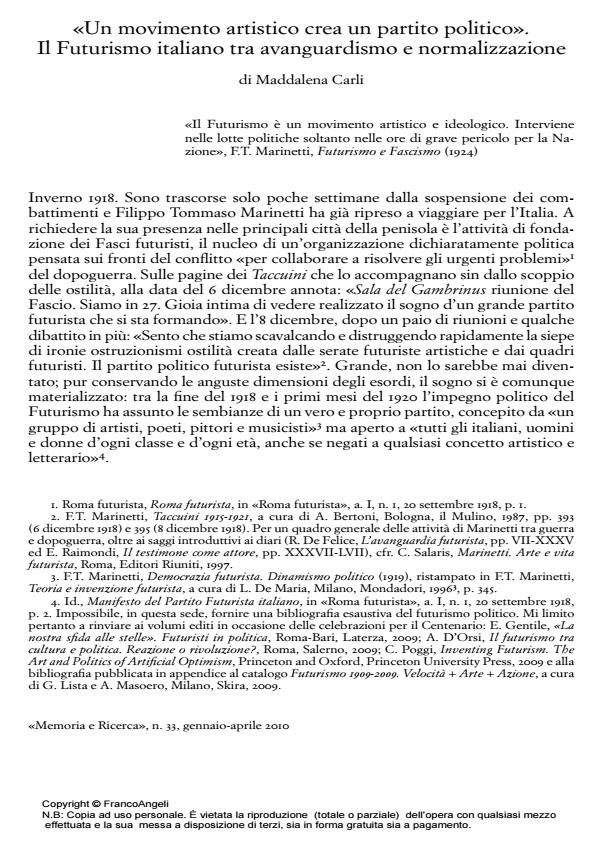"One artistic movement creates a political party". The Italian Futurism between avanguardismo and normalization
Journal title MEMORIA E RICERCA
Author/s Marchese Carla
Publishing Year 2010 Issue 2010/33
Language Italian Pages 14 P. 15-28 File size 307 KB
DOI 10.3280/MER2010-033002
DOI is like a bar code for intellectual property: to have more infomation
click here
Below, you can see the article first page
If you want to buy this article in PDF format, you can do it, following the instructions to buy download credits

FrancoAngeli is member of Publishers International Linking Association, Inc (PILA), a not-for-profit association which run the CrossRef service enabling links to and from online scholarly content.
Winter 1918: a few weeks after the end of WWI, Filippo Tommaso Marinetti wrote on his Taccuini: «The futurista political party do exists». Despite the strong judgment expressed since its origin by the artist movement against the political parliamentary system, between September 1918 and may 1920 the Italian futurists created a real political party. The essay analyses the history and the evolution of this political movement as part of the changes and clashes which distinguished the Italian social situation in the fi rst period following the First World War. At the same time, the essay tries to investigate on the role of the futurist party in the Italian society analysing its experience from different points of view: was the creation of the party just a provocation made by an artistic movement? Was the party one propaganda instrument to present the movement itself in one critical period of Italian and European society? Or was it just the expression of the sense of paradox which was a particular quality of the historical vanguards?
Keywords: Futurism, Filippo Tommaso Marinetti, Political party, Avanguardismo, Combattentismo, Fascism
Marchese Carla, "Un movimento artistico crea un partito politico". Il Futurismo italiano tra avanguardismo e normalizzazione in "MEMORIA E RICERCA " 33/2010, pp 15-28, DOI: 10.3280/MER2010-033002